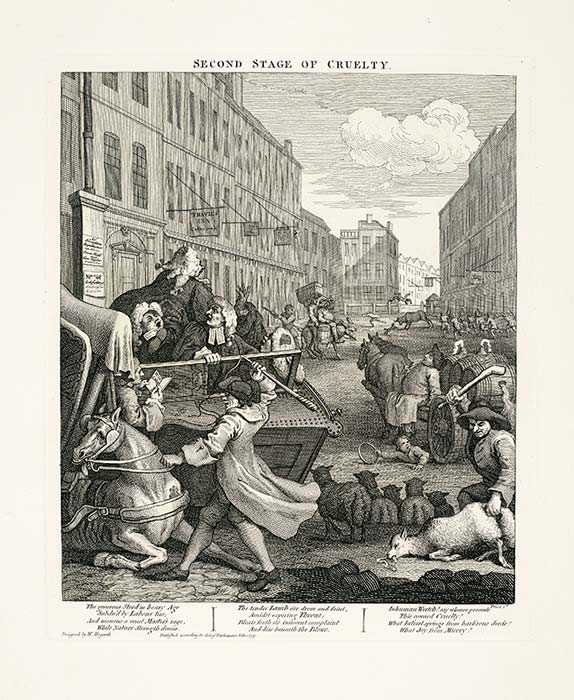
English artist William Hogarth, a lover of animals, was so distressed by the acts of cruelty he witnessed on the streets of London that he published a series of engravings, 'The four stages of cruelty', in 1751. They depicted the belief that cruelty to animals in childhood inevitably led on to violent crime against people in adulthood. In this image, the' Second stage of cruelty', the villain of the story, Tom Nero, is shown flogging his horse, which has collapsed under the strain of a heavily laden cart. Nearby another man clubs a sheep to death, a man prods an overloaded donkey with a pitchfork, and at the rear a crowd of people look on as a bull is baited with a dog. Hogarth's views were ahead of their time, but over the next 60 years more people began to speak out against abuse of animals.
The first major law to prevent cruelty to horses, cattle and sheep was passed in England in 1822, followed by another in 1835 which outlawed animal-baiting (setting dogs on a bear, bull or other animal to make it fight back). These laws applied to New Zealand once the country became a British colony in 1840. Otago and Nelson provinces also passed anti-cruelty ordinances.
Using this item
Alexander Turnbull Library, Hogarth Collection
Reference:
D-020-075
Engraving by William Hogarth
Permission of the Alexander Turnbull Library, National Library of New Zealand, Te Puna Mātauranga o Aotearoa, must be obtained before any re-use of this image.





Add new comment